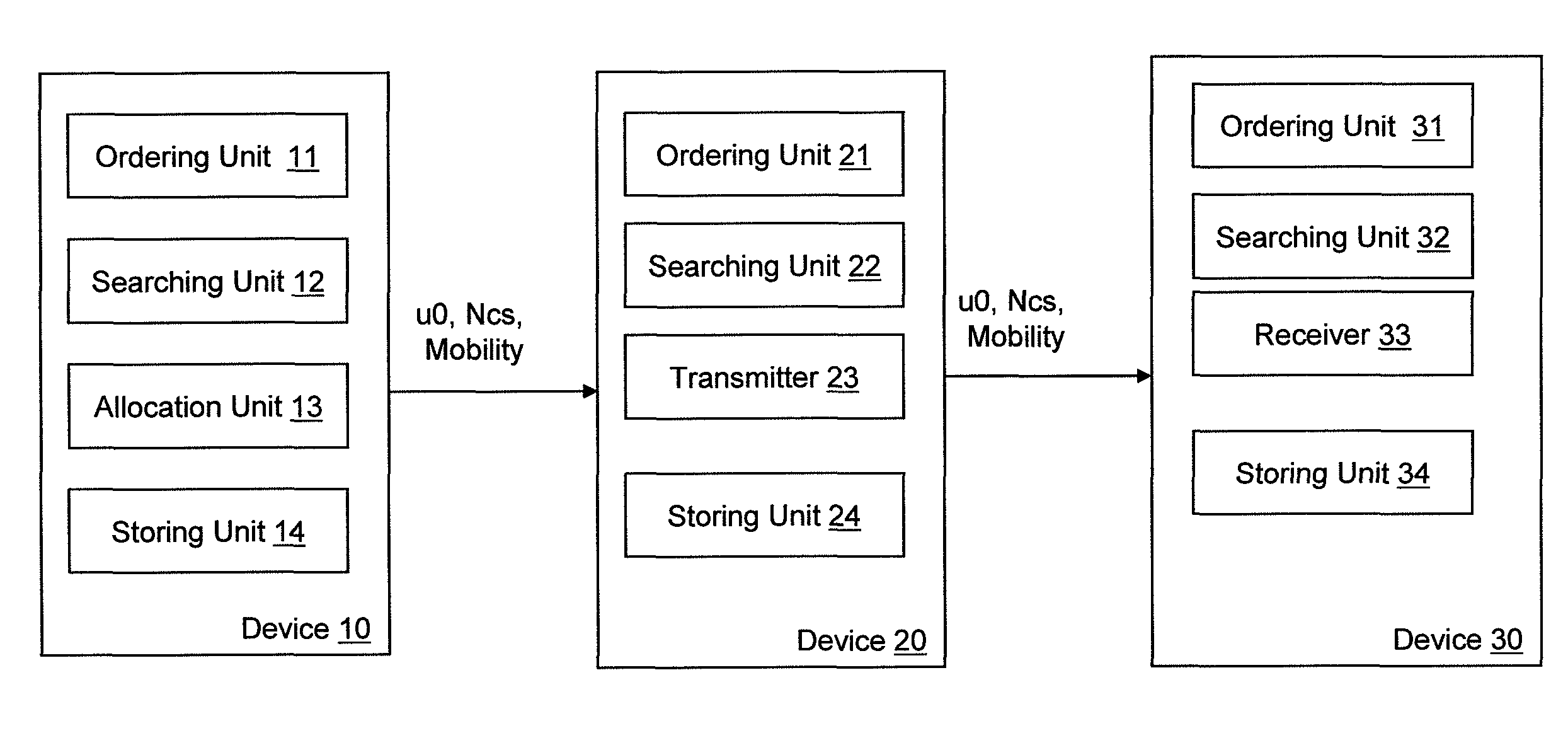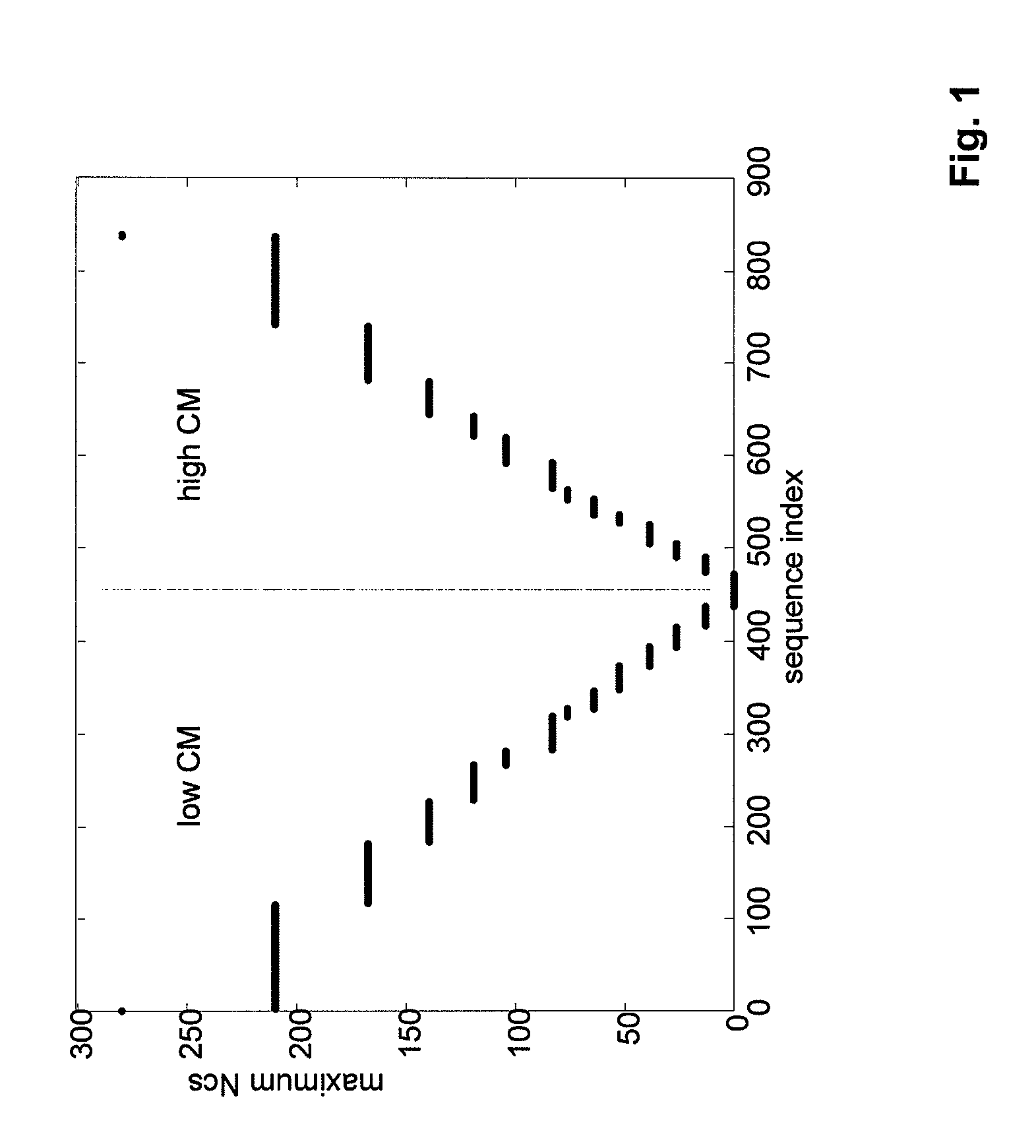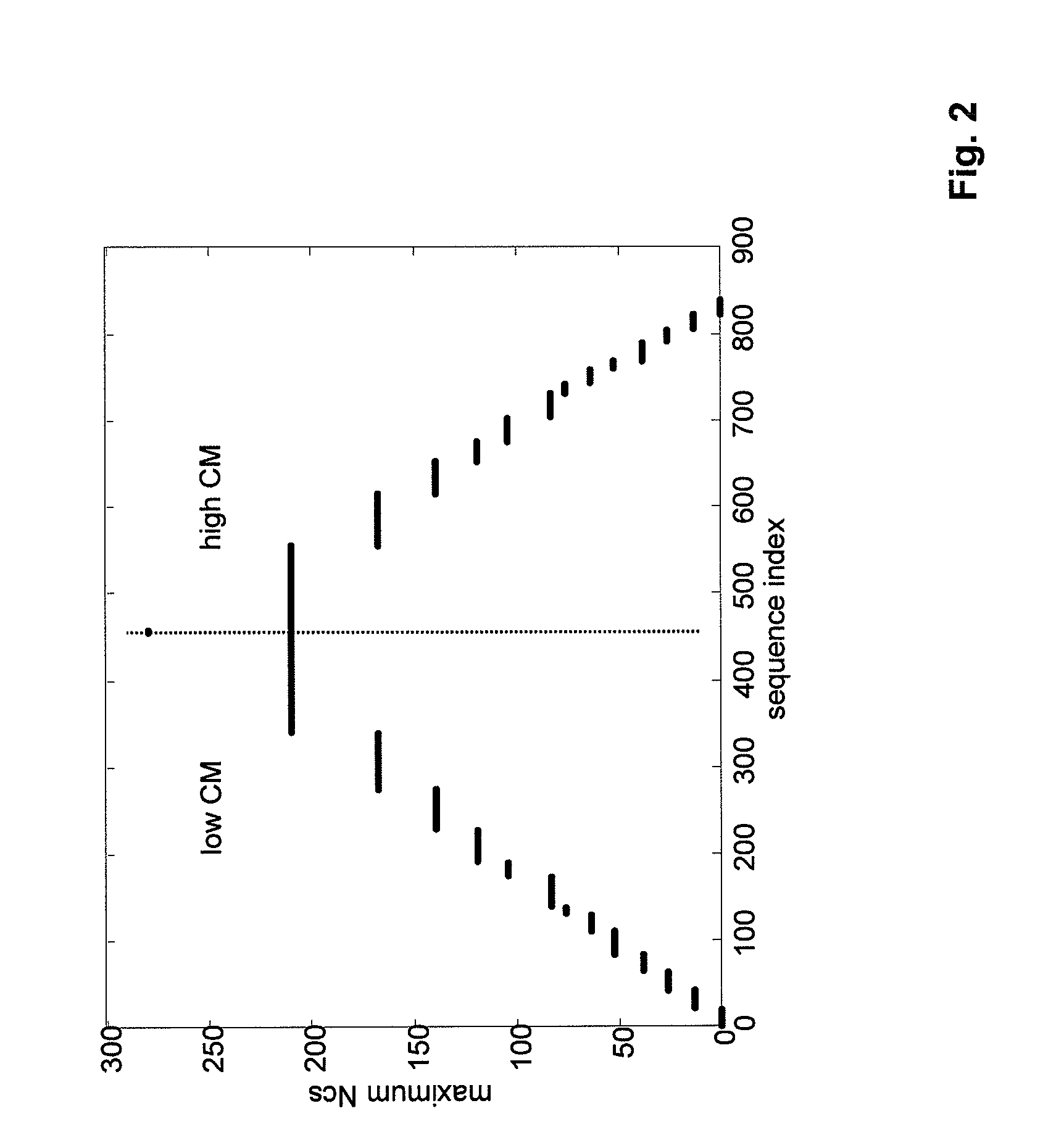Allocation of preamble sequences
a technology of preamble sequences and access procedures, applied in signal allocation, transmission path sub-channel allocation, wireless commuication services, etc., can solve the problems of varying cubic metric (cm) of sequences and completely denying utilization
- Summary
- Abstract
- Description
- Claims
- Application Information
AI Technical Summary
Benefits of technology
Problems solved by technology
Method used
Image
Examples
first embodiment
[0034]According to the first embodiment, sequence allocation is made cyclic. According to an E-UTRAN system, a UE forms a set of 64 sequences by starting from a broadcasted sequence u0 and using the consecutive sequences as needed. Sequence number one is considered to be consecutive to the sequence number 838.
[0035]The first embodiment is described by referring to FIG. 5. The first ordering scheme as shown in FIG. 1 is adopted. A desired division of sequences between high and low mobility cells may be made e.g. as shown by the lines with the arrow heads: Dashed lines mark the sequences that are reserved for allocation in the high mobility cells while sequences marked with a dotted line are reserved for low mobility cells. How large these reserved sequence sets should be, depends on the number of high mobility cells relative to the low mobility cells and the cell size. Let us also assume that Ncs is below 167. Without the cyclic allocation, the sequences reserved for high mobility ce...
second embodiment
[0049]The second embodiment proposes a sequence ordering scheme that combines the first and third ordering schemes or the second and third ordering schemes. First the low and high CM sets are formed as shown in FIG. 1 or 2. Then the third ordering scheme is applied separately to the low and high CM sets or at least to the high CM set: Subsets are formed according to the supported cell size and the sequences inside each subset are ordered according to the CM. The resulting CM configuration is shown in FIG. 7 for the case that the first and the third ordering schemes are combined and subsets are formed for both low and high CM sets.
[0050]The second embodiment combines benefits of the first and third ordering schemes. CM defines the power back-off that UE has to apply in order to maintain low enough interference level on the adjacent channels: if CM is large, the UE has to lower its mean transmission power. On the other hand, if CM is low, the UE could transmit with higher mean power w...
PUM
 Login to View More
Login to View More Abstract
Description
Claims
Application Information
 Login to View More
Login to View More - R&D
- Intellectual Property
- Life Sciences
- Materials
- Tech Scout
- Unparalleled Data Quality
- Higher Quality Content
- 60% Fewer Hallucinations
Browse by: Latest US Patents, China's latest patents, Technical Efficacy Thesaurus, Application Domain, Technology Topic, Popular Technical Reports.
© 2025 PatSnap. All rights reserved.Legal|Privacy policy|Modern Slavery Act Transparency Statement|Sitemap|About US| Contact US: help@patsnap.com



